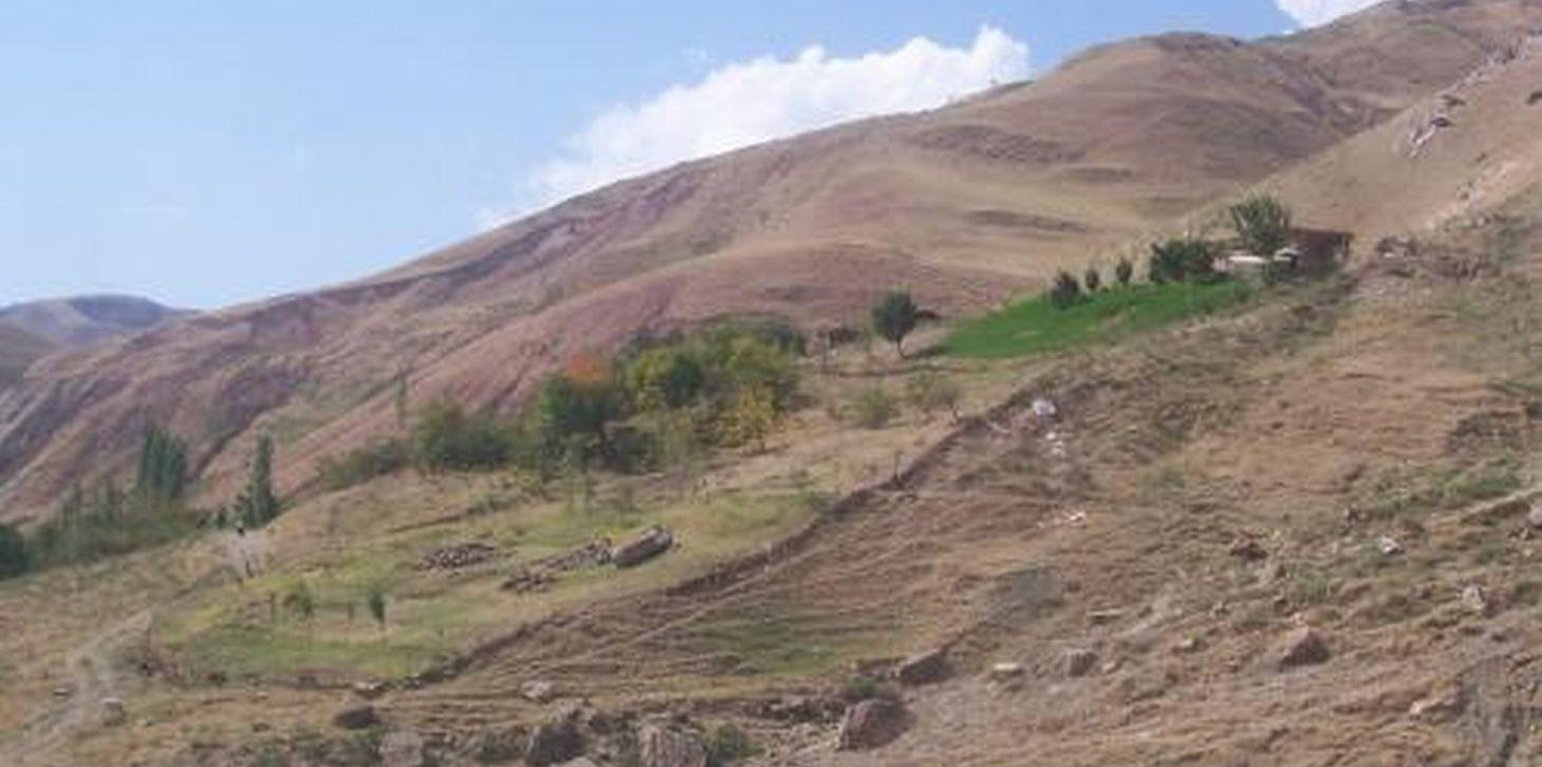



A small area of previously severely eroded and almost devoid of vegetation area of land that was transformed through the building a perimeter fence, supplying a simple irrigation system and the planting of a diverse range of crops to provide a rich, integrated farming system. Activities then completed on this area included: orchard planting, perennial fodder crops (lucerne), garden vegetables, bee keeping for honey production and small scale animal rearing.
Purpose of the Technology: The farmer clearly stated that his prime, initial purpose in taking over this “ruined and abandoned land” was to improve and better guarantee the quality of his family’s lifestyle through enhanced and assured food and fodder production. He also recognised the potential for future profit through sale of his excess produce to market. Currently, the family has almost no need to buy food (and fodder) from nearby markets, apart from flour for bread making. This is a large cost saving. In hindsight, the farmer sees that he has dramatically improved land quality within the enclosure through mitigating erosion and increasing year-round vegetation cover.
Establishment / maintenance activities and inputs: The family (Enomali is the family name) first occupied this land in 1984. The first task was tree planting – a variety of orchard trees – on 0.1 ha of the current enclosure. This was fenced using abandoned wire and metal supports from old Russian factories. After nine family members left (to work in Dushanbe) the land user expanded the fence to the current 0.2 ha and continued to plant trees. He continued the stone removal through the 1990s and even up until the present day. Lucerne and vegetable gardens were initiated in the 1990s and continue to be enriched as required. Fodder, tree and vegetable production includes an ongoing set of tasks, as does the animal feeding with the home-grown fodder. Bee keeping is seasonal and the honey kept for home consumption. The land user continues to plant orchard trees every year and currently has more than 100. He gained a “certificate” of ownership” in 2008.
Natural / human environment: Before the family occupied this land, the land user stated that it was “totally ruined and abandoned”. That is why it was unoccupied. The family were prepared to work extremely hard to convert this ruined land to the green and productive “island” that it now is. The people in the area are dependent upon the produce of the land, however suitable land is in short supply and subject to population pressures.
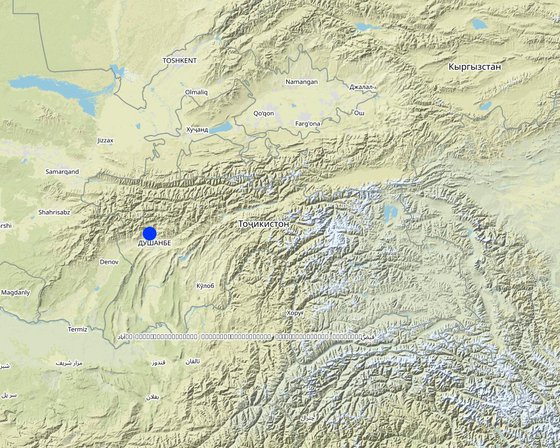
Location: Varzob, Central District of Tajikistan, Tajikistan
No. of Technology sites analysed:
Spread of the Technology: evenly spread over an area (approx. < 0.1 km2 (10 ha))
In a permanently protected area?:
Date of implementation: 10-50 years ago
Type of introduction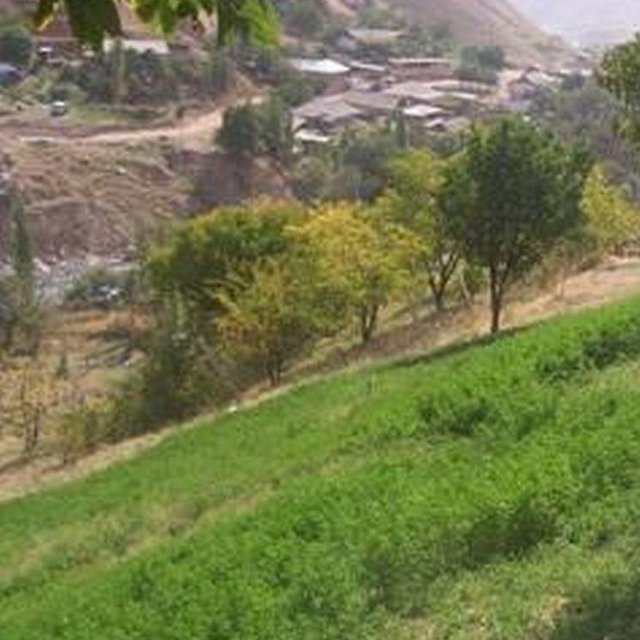
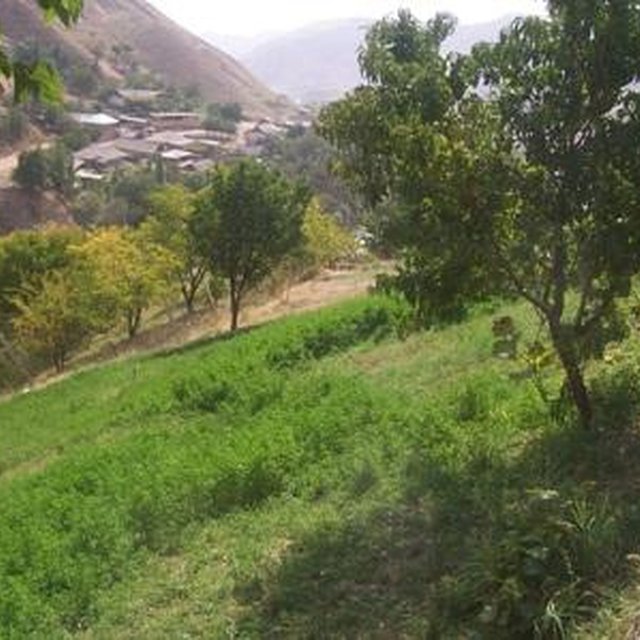









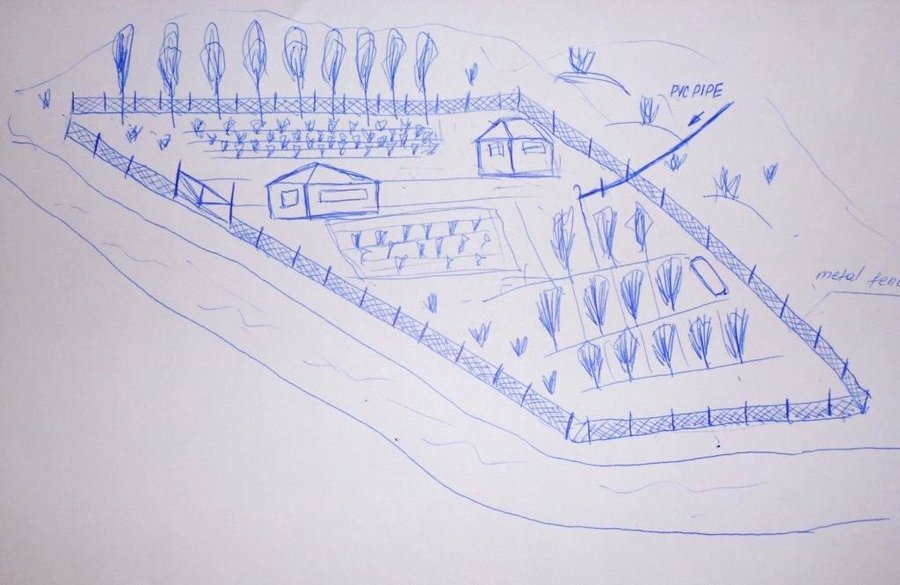
| Specify input | Unit | Quantity | Costs per Unit (somoni) | Total costs per input (somoni) | % of costs borne by land users |
| Labour | |||||
| Fence building | Persons/day | 100.0 | 25.0 | 2500.0 | 100.0 |
| Tree planting | Persons/day | 10.0 | 25.0 | 250.0 | 100.0 |
| Cover cropping | Persons/day | 5.0 | 25.0 | 125.0 | 100.0 |
| Vegetable garden | Persons/day | 50.0 | 25.0 | 1250.0 | 100.0 |
| Plant material | |||||
| Trees | Pieces | 50.0 | 10.0 | 500.0 | 100.0 |
| Plants | Pieces | 3000.0 | 0.33333333 | 1000.0 | 100.0 |
| Construction material | |||||
| Fence | meter | 200.0 | 2.25 | 450.0 | 100.0 |
| Irrigation pipe | meter | 1500.0 | 1.5 | 2250.0 | 100.0 |
| Other | |||||
| Labour: Small vegetable beds | Persons/day | 20.0 | 25.0 | 500.0 | 100.0 |
| Total costs for establishment of the Technology | 8'825.0 | ||||
| Total costs for establishment of the Technology in USD | 1'961.11 | ||||
| Specify input | Unit | Quantity | Costs per Unit (somoni) | Total costs per input (somoni) | % of costs borne by land users |
| Labour | |||||
| Better crop cover and cover cropping | Persons/day | 10.0 | 25.0 | 250.0 | 100.0 |
| Stone clearing | Persons/day | 10.0 | 25.0 | 250.0 | 100.0 |
| Vegetable garden incl. fertilizing | Persons/day | 15.0 | 25.0 | 375.0 | 100.0 |
| Animal husbandry (and bee keeping) | Persons/day | 40.0 | 25.0 | 1000.0 | 100.0 |
| Other | |||||
| Labour: Tree planting | Persons/day | 10.0 | 25.0 | 250.0 | 100.0 |
| Labour: Lucerne reseeding | Persons/day | 10.0 | 25.0 | 250.0 | 100.0 |
| Labour: Vegetable planting | Persons/day | 50.0 | 25.0 | 1250.0 | 100.0 |
| Labour: Preparing small vegetable beds | Persons/day | 20.0 | 25.0 | 500.0 | 100.0 |
| Total costs for maintenance of the Technology | 4'125.0 | ||||
| Total costs for maintenance of the Technology in USD | 916.67 | ||||
Quantity before SLM: 0
Quantity after SLM: None
Prior to the technology this land was “ruined, denuded wasteland” that had almost no carrying capacity, no productivity and no water supply, so the % increase as a result of the technology is from a starting point of zero.
Quantity before SLM: 0
Quantity after SLM: None
Quantity before SLM: 0
Quantity after SLM: None
Quantity before SLM: 2
Quantity after SLM: None
Quantity before SLM: 0
Quantity after SLM: None
Quantity before SLM: 0
Quantity after SLM: None
Quantity before SLM: 0
Quantity after SLM: None
Quantity before SLM: 0
Quantity after SLM: None
Quantity before SLM: 0
Quantity after SLM: None
Quantity before SLM: 0
Quantity after SLM: None
Quantity before SLM: 0
Quantity after SLM: None
Quantity before SLM: 0
Quantity after SLM: None
Quantity before SLM: 0
Quantity after SLM: None
The primary aim of the farmer in introducing the Technology was to improve the family’s lifestyle and well being. He has easily achieved this and it seems to be getting better, year on year. The family have improved their food security and quality.
Quantity before SLM: 0
Quantity after SLM: None
Quantity before SLM: 0
Quantity after SLM: None
Quantity before SLM: 0
Quantity after SLM: None
Quantity before SLM: 0
Quantity after SLM: None
Quantity before SLM: 0
Quantity after SLM: None
Quantity before SLM: 0
Quantity after SLM: None
Quantity before SLM: 0
Quantity after SLM: None
Quantity before SLM: 0
Quantity after SLM: None
Quantity before SLM: 0
Quantity after SLM: None
Quantity before SLM: 0
Quantity after SLM: None
Quantity before SLM: 0
Quantity after SLM: None
Quantity before SLM: 0
Quantity after SLM: None
Quantity before SLM: 0
Quantity after SLM: None
Quantity before SLM: 0
Quantity after SLM: None
Quantity before SLM: 0
Quantity after SLM: None
As the Technology has so revolutionised the productive capacity and sustainability of the site, there are no obvious disadvantages.